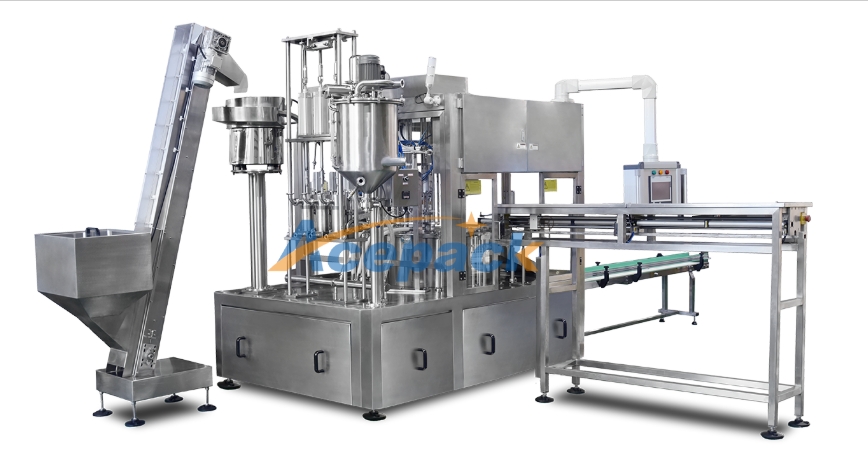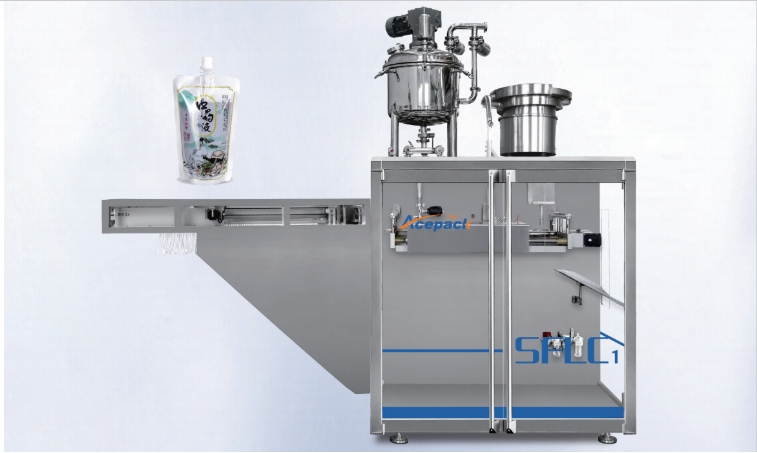The Future of Packaging: Exploring Filling and Capping Machines
Apr 18, 2025
In the fast-paced world of manufacturing and packaging, efficiency and precision are paramount. As industries evolve, the demand for reliable machinery that can keep up with production needs has never been higher. Among the most essential equipment in this realm are filling and capping machines. These machines play a crucial role in ensuring that products are filled accurately and sealed securely, making them indispensable in various sectors, including food and beverage, pharmaceuticals, and cosmetics. In this blog, we will delve into the different types of filling and capping machines, focusing on the Multi-head Filling and Capping Machine and the Single-head Filling and Capping Machine, while highlighting their features and benefits.

Understanding Filling and Capping Machines
Filling and capping machines are designed to automate the process of filling containers with liquids, powders, or granules and sealing them securely. The efficiency of these machines directly impacts production rates, product quality, and overall operational costs.
Multi-head Filling and Capping Machine
The Multi-head Filling and Capping Machine is engineered for high-volume production. As the name suggests, this machine features multiple filling heads, allowing it to fill several containers simultaneously. This capability significantly increases output, making it ideal for businesses that require rapid production cycles.
Key Features:
- Stable and Efficient Operation: The Multi-head design ensures that the filling process is stable and efficient, minimizing downtime and maximizing productivity.
- Accurate Filling: With advanced technology, these machines provide precise filling, reducing waste and ensuring that each container is filled to the correct level.
- Firm Sealing: The sealing mechanism is designed to create a secure closure, preventing leaks and maintaining product integrity.
- Reasonable Design: The layout of the machine is optimized for ease of use, allowing operators to manage the filling and capping process with minimal training.
Benefits:
- High Production Speed: The ability to fill multiple containers at once means that businesses can meet high demand without sacrificing quality.
- Cost-Effective: By increasing output and reducing labor costs, Multi-head Filling and Capping Machines can lead to significant savings for manufacturers.
- Versatility: These machines can handle a variety of container sizes and shapes, making them suitable for diverse product lines.
Single-head Filling and Capping Machine
On the other hand, the Single-head Filling and Capping Machine is designed for smaller production runs or products that require a more delicate handling process. While it may not have the same output capacity as its multi-head counterpart, it offers its own set of advantages.
Key Features:
- Simple Operation: The Single-head machine is user-friendly, making it easy for operators to manage the filling and capping process without extensive training.
- Convenient Maintenance: With fewer moving parts, maintenance is straightforward, allowing for quick repairs and minimal downtime.
- Stable Quality: The machine is built with high-quality materials, ensuring that it delivers consistent performance over time.
Benefits:
- Ideal for Small Businesses: For startups or businesses with lower production needs, the Single-head Filling and Capping Machine provides an affordable solution without compromising on quality.
- Flexibility: This machine can easily adapt to different product types, making it suitable for a range of industries.
- Long Service Life: Constructed from acid-resistant aluminum and stainless steel, the Single-head machine is designed to withstand the rigors of daily use, ensuring longevity and reliability.

Choosing the Right Machine for Your Needs
When deciding between a Multi-head and a Single-head Filling and Capping Machine, it’s essential to consider your production requirements, budget, and the nature of your products.
- Production Volume: If your business demands high output, the Multi-head machine is the clear choice. However, if you are just starting or have a niche product, the Single-head machine may be more appropriate.
- Product Type: Consider the viscosity and nature of the product you are filling. Some products may require more delicate handling, making a Single-head machine a better fit.
- Budget: While Multi-head machines can be more expensive upfront, their efficiency may lead to cost savings in the long run. Conversely, Single-head machines are generally more affordable and can be a great investment for smaller operations.

Conclusion
Filling and capping machines are vital components of the packaging process, ensuring that products are filled accurately and sealed securely. Whether you opt for a Multi-head Filling and Capping Machine for high-volume production or a Single-head Filling and Capping Machine for smaller runs, both options offer unique advantages that can enhance your manufacturing process. With their stable performance, reasonable design, and long service life, investing in the right filling and capping machine can lead to increased efficiency, reduced costs, and ultimately, greater customer satisfaction. As the packaging industry continues to evolve, these machines will remain at the forefront, driving innovation and productivity in manufacturing.






.webp?x-oss-process=image/resize,w_100/quality,q_100)

.webp?x-oss-process=image/resize,w_100/quality,q_100)
